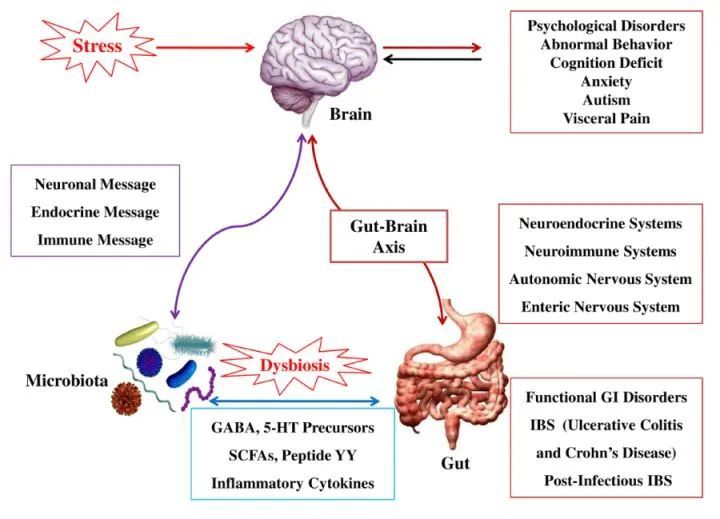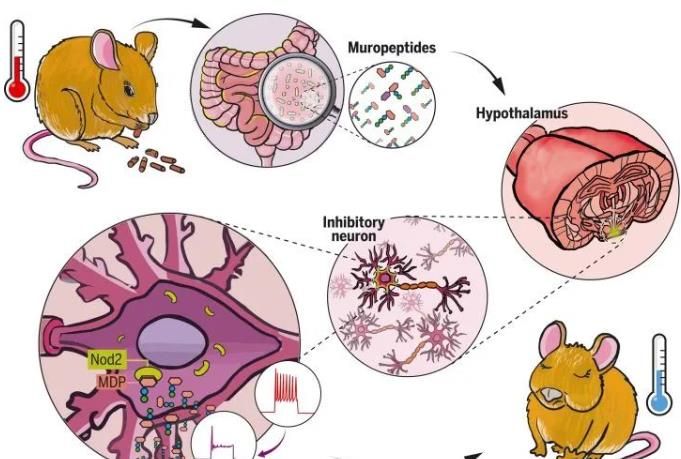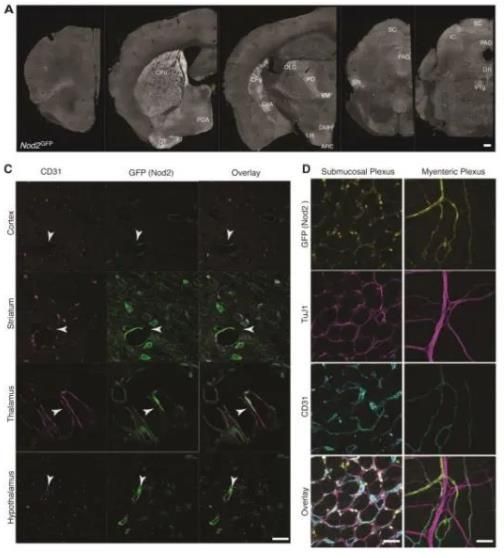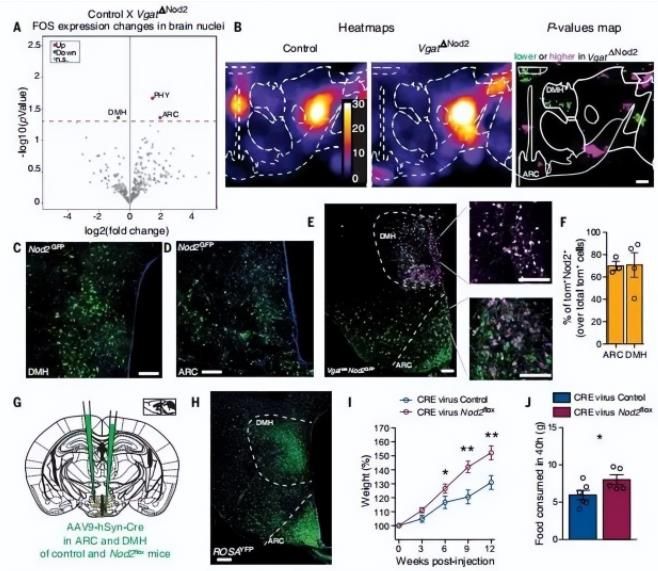Thoughts determine the way out, but what determines the brain? A new study that subverts your cognition shows you
In a recent study published in Science, a team of researchers from institutions including the Pasteur Institute revealed a mysterious link between the brain and a certain type of bacteria. In experimental mouse models, they found that neurons in the hypothalamus can directly detect changes in the activity of certain bacteria and regulate processes such as diet and body temperature in response to these changes.
01. Gut microbiota and the gut-brain axis
The gut microbiota is related to people, and the gut microbiome is a huge group in our body. How big are these microbes? According to incomplete statistics, there are more than 1,000 kinds of intestinal microbes in the human body. They perform different functions. The number is even more huge, with a scale of nearly one trillion. This number far exceeds the number of cells in the human body, let alone the number of cells in the human body. Hundreds of thousands of times the number of humans. So scientists call it the second genome of the human body.
It forms a complete and mutually beneficial system with our human body. They can not only help resist the invasion of foreign germs, but also secrete immunoglobulins to help the human body improve immunity; for example, they can regulate the human body's physiology by promoting the repair of the damaged mucosa of the human body. . In addition, it is the role of intestinal microorganisms to promote intestinal digestion and absorption, helping to degrade some sugars.
But is it just that?
One of the current frontier areas: the Gut–brain axis.
Of course, the brain-gut axis here is not the idea that the gut directly affects the brain in some ancient books, but the concept of microbiology.
The definition of the gut-brain axis is simply as follows
The Gut–brain axis refers to the bidirectional signaling and association between the gut and the brain, mainly related to gut microbes.

02. The cell-gut-brain axis and autism
Here, we first introduce the problem of the gut-brain axis by taking a study published in the top biology journal "CELL" as an example. The title of the study is "Human Gut Microbiota from Autism Spectrum Disorder Promote Behavioral Symptoms in Mice", I believe many people have guessed the research of this article after reading the title, that is, the gut microbes of autism patients can trigger mice of autism.
Briefly describe the author's research.
The author's first choice of research material is special germ-free mice, which can avoid the influence of the mouse's own intestinal microbes to the greatest extent. At the same time, two groups of autism (Autism spectrum disorder, ASD) and normal individuals (typically-developing, TD) were selected, but instead of studying these people directly, they took their feces, because there are a lot of microorganisms in the feces Well. Next, a formal study was carried out, in which the feces of the two groups of patients were transplanted into germ-free mice, and the behavior of the mice was observed.

As expected, the feces of autistic patients and normal people showed significant differences in mice, and the mice transplanted with autistic patients showed obvious autism-like symptoms in humans, such as increased repetitive behaviors. , motor and communication skills are weakened. And, this behavior is passed on to the next generation.
It can be said that this very clearly confirms a problem, that is, gut microbes directly affect the brain.
The reason for this is that metabolites affect gene expression, such as GABA and glycine receptor agonists/inhibitors, which are autism-related components.
03, science-brain-gut axis acts on nerves
If the above study introduced that the brain-gut axis affects some components of autism, then this article introduces that the gut microbiota affects neurons.

Let's take a picture to introduce the process of the whole article

This diagram shows the regulation of metabolism by the gut-brain axis.
When the mice consumed food, the gut microbiota expanded, which then led to an increase in muramin, which then reached the brain and targeted a portion of the hypothalamic neurons.
This part, in turn, reduces neuronal activity, which helps regulate satiety and body temperature in mice.
Specifically, it is as simple as that. They found that the key factor in this regulation is Nod2 (nucleotide oligomerization domain 2, which has a feeling of calling of duty)

Nod2 in the hypothalamus is involved in the regulation of body weight and body temperature

04. The significance of research
Since the brain can feel the situation of gut microbes, it is estimated that the first thing that many people think of is: weight loss.
Although there have been fecal transplantation studies before, it is to find a thin man to transplant his intestinal flora into the belly of a fat man, and then lose weight.
But it is estimated that many people will be more resistant to this.
And this article proposes that the brain nerves sense the intestinal flora, so there is another idea, that is, to regulate human metabolism by affecting the intestinal flora. For example, the practice of intervening in the intestinal flora can be probiotics or the like, adjusting the type of intestinal flora, and finally affecting the brain.
Of course, in turn, the gut microbiota can also be regulated by the brain, such as for some patients with gastrointestinal diseases.
In fact, it is quite attractive, mental illness and gastrointestinal problems are solved together.
Of course, this is very far in the future.
Dear viewers, what do you think after watching this? The comment area looks forward to your message.
Subscribe I have a different wonderful every day!
Like my work? Don't forget to support and clap, let me know that you are with me on the road of creation. Keep this enthusiasm together!
